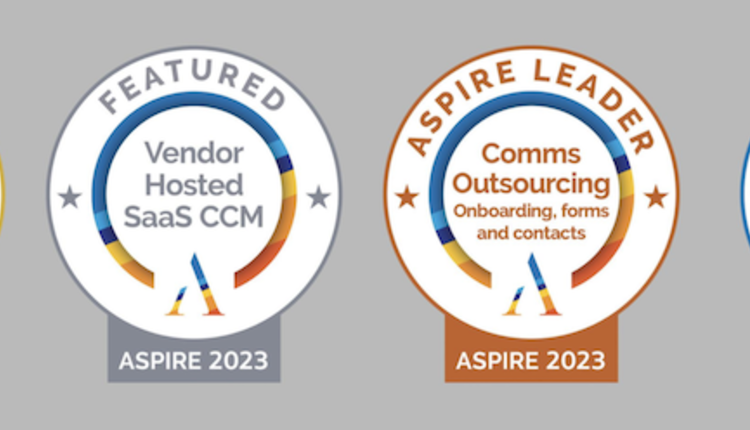
Customer engagement management (CEM) is the practice of optimizing the lifetime value of customers. CEM is significantly influenced by customer communication practices and has seen rapid growth and adoption in recent years. InfoTrends estimates the customer communications software market to be worth $870 million in 2013 and growing at a 9.9% CAGR to $1.4 billion in 2018.
Enterprises are investing in CEM for three primary reasons:
1. To deliver an exceptional customer experience that delights customers and turns them into loyal brand advocates. Multi-channel synchronicity is a key concept here, ensuring that experiences across multiple channels are joined up and follow customers’ preferences.
2. To drive business growth by using data analytics, social media listening and other tactics to better understand and influence customers’ buying behavior. Optimizing the lifetime value through upsell/cross-sell and higher customer retention is of fundamental importance.
3. To reduce communications costs by enabling business users to take control. Many businesses have been feeling the pinch of rising legislative pressures, combined with the tightening of IT budgets. As a result, organizations are often faced with long lead times when it comes to updating or modernizing their communications.
While strategy formulation can be complex since the technological changes are happening at such a fast pace, executing on the strategy is actually often much harder. InfoTrends conducted a large study in 2013 to learn more where the issues lie and how to overcome them. Complexities in information technology (IT), challenges in funding, dealing with a steady stream of legislative changes and organizational re-alignments (especially with marketing) were some of the key barriers mentioned.
The Center of Excellence should be a cross-functional or cross-departmental team that consists of key stakeholders that assume responsibility for customer communications. This could be marketing people, digital/web folks, print operations and others. When new CEM initiatives are developed or new communications are deployed, this team should evaluate the plans and messages and ensure they are aligned with the corporate communications objectives at corporate level. There also needs to be a healthy level of “internal policing,” e.g., making sure there is consistency in style, branding and messaging. We also recommend that this team develops customer experience measurement metrics and maps them on business outcomes.
The other key recommendation is to look at implementing a centralized Engagement Hub. This can be conceptualized as some sort of gateway through which (ideally) all in- and outbound communications should be funneled, which can then be tracked, analyzed and archived. This archive can then be made accessible to business users who need holistic overviews of what has been communicated to customers.
Increasingly, communications and digital experiences are becoming personalized, so when customers contact the organization with questions or want to continue an online experience as a conversation with a real person, having the ability to instantly go back in time to retrieve previous communications is absolutely essential.
Enterprises are investing in CEM for three primary reasons:
1. To deliver an exceptional customer experience that delights customers and turns them into loyal brand advocates. Multi-channel synchronicity is a key concept here, ensuring that experiences across multiple channels are joined up and follow customers’ preferences.
2. To drive business growth by using data analytics, social media listening and other tactics to better understand and influence customers’ buying behavior. Optimizing the lifetime value through upsell/cross-sell and higher customer retention is of fundamental importance.
3. To reduce communications costs by enabling business users to take control. Many businesses have been feeling the pinch of rising legislative pressures, combined with the tightening of IT budgets. As a result, organizations are often faced with long lead times when it comes to updating or modernizing their communications.
While strategy formulation can be complex since the technological changes are happening at such a fast pace, executing on the strategy is actually often much harder. InfoTrends conducted a large study in 2013 to learn more where the issues lie and how to overcome them. Complexities in information technology (IT), challenges in funding, dealing with a steady stream of legislative changes and organizational re-alignments (especially with marketing) were some of the key barriers mentioned.
Complexities in information technology (IT), challenges in funding, dealing with a steady stream of legislative changes and organizational re-alignments (especially with marketing) were some of the key barriers mentioned.Based on the study, InfoTrends came up with a set of recommendations for end users that want to follow some “best practices” when it comes to implementing customer engagement management solutions—namely to form a Center of Excellence and implement a centralized Engagement Hub.
The Center of Excellence should be a cross-functional or cross-departmental team that consists of key stakeholders that assume responsibility for customer communications. This could be marketing people, digital/web folks, print operations and others. When new CEM initiatives are developed or new communications are deployed, this team should evaluate the plans and messages and ensure they are aligned with the corporate communications objectives at corporate level. There also needs to be a healthy level of “internal policing,” e.g., making sure there is consistency in style, branding and messaging. We also recommend that this team develops customer experience measurement metrics and maps them on business outcomes.
The other key recommendation is to look at implementing a centralized Engagement Hub. This can be conceptualized as some sort of gateway through which (ideally) all in- and outbound communications should be funneled, which can then be tracked, analyzed and archived. This archive can then be made accessible to business users who need holistic overviews of what has been communicated to customers.
Increasingly, communications and digital experiences are becoming personalized, so when customers contact the organization with questions or want to continue an online experience as a conversation with a real person, having the ability to instantly go back in time to retrieve previous communications is absolutely essential.
For more information on InfoTrends’ research in this area or our CEM strategy assessment service, please contact Scott.Phinney@Infotrends.com.
Kaspar Roos is a director for InfoTrends production software services group, which focuses on providing technology, business and market insights to clients active in the customer communications management, digital marketing & media and production workflow markets.
Kaspar Roos is a director for InfoTrends production software services group, which focuses on providing technology, business and market insights to clients active in the customer communications management, digital marketing & media and production workflow markets.















